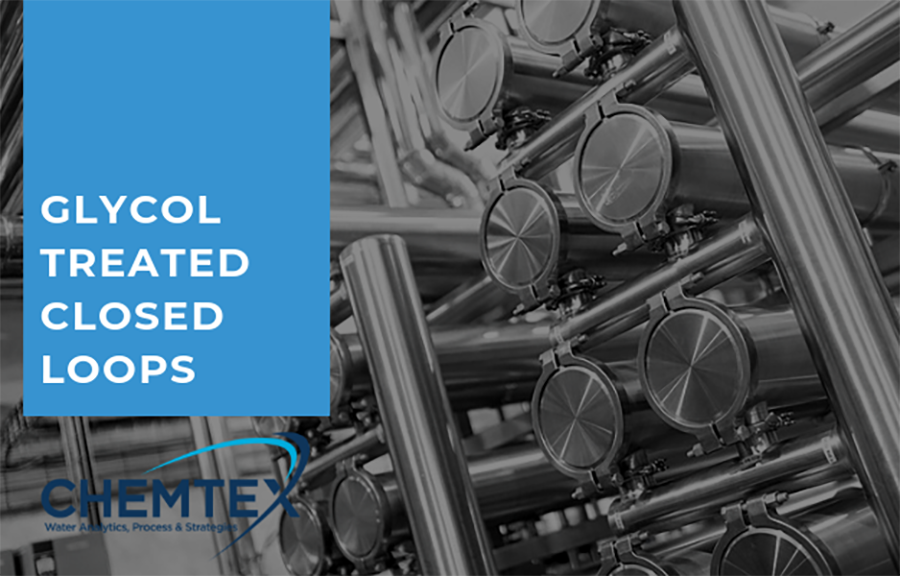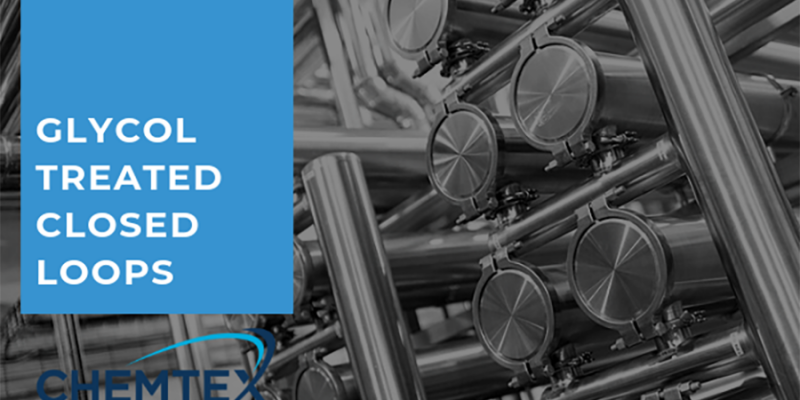
Glycol Treated Closed Loops
Some closed loop systems require protection from freezing. Untreated water expands when frozen, so it goes without saying that exposing water in a closed loop system to freezing conditions can result in a very costly rupture.
Glycol is the industry standard for freeze protection in most closed loop applications. Closed loop systems can be completely filled with glycol and water, or just the coils can be isolated and treated for protection.
Types of Glycol
Typically, two types of glycol is used for closed loops. The two major types of glycol used are ethylene and propylene.
Ethylene glycol is often used for HVAC applications. It offers the most efficient heat exchange medium. Propylene glycol was developed to replace ethylene glycol under circumstances when potable water and food could be exposed. In some locations, propylene glycol must be used because it is more friendly to the environment. Ethylene glycol should not be used if there is a risk of contaminating potable water, food processing, or any products to be consumed by humans.
While glycol protects the loops from freezing, it does reduce the efficiency of the fluid. For example, a 20% ethylene glycol solution results in a 6% loss of heat transfer, whereas 40% glycol solution results in a 14.5% loss of heat transfer.
Propylene glycol has inferior heat transfer efficiency compared to ethylene glycol. And, it requires slightly more propylene glycol to provide the same freeze protection as ethylene glycol.
Oxidation Inhibitors
All glycols oxidize when exposed to heat and air, when the glycol breaks down it forms a combination of organic acids. If not properly inhibited, this becomes is very corrosive. Some glycols are sold with corrosion inhibitor packages built in from the manufacturer. At other times, inhibitors are added to the glycol to prevent damage to system metals. Certain types of inhibitors passivate the metal surfaces, protecting them from corrosion while others buffer the solution to enhance protection. The buffering capacity of these inhibitors can be tested with a Reserve Alkalinity Test. If a complete breakdown of the glycol has not occurred, corrosion protection can be restored by adding fresh inhibitor.
Biological Fouling
In addition to glycol breakdown, biological fouling can also occur in loops protected from freezing with glycol. Bacterial slime grows by feeding on the organic carbohydrates present in the glycol. Certain inhibitors also can provide food for bacterial growth. Like most systems that become inoculated with bacteria, once a bacterial slime takes hold, system corrosion will increase and problems can accelerate.
Monitoring the System
Routine system monitoring is essential. Freeze protection, reserve alkalinity, inhibitor levels and biological contamination should all be monitored for appropriate levels. In systems where a glycol solution is maintained on a continuous basis, extra corrosion inhibitor may be needed.
Chemtex can verify that the glycol solution in a facility’s system is in good condition by testing and laboratory analysis. We can also make recommendations for ensuring system health and minimizing the issues that are common to glycol loops. Give us a call if you have any questions about treating your closed loop with glycol.




/NQA-ISO-9001-Logo-ANAB.jpg)